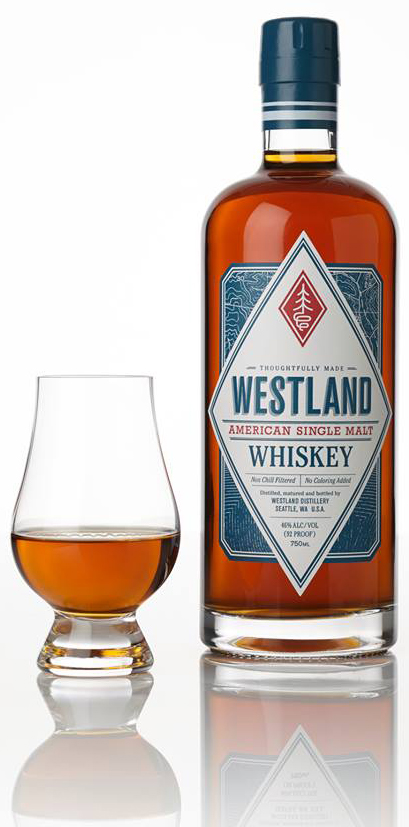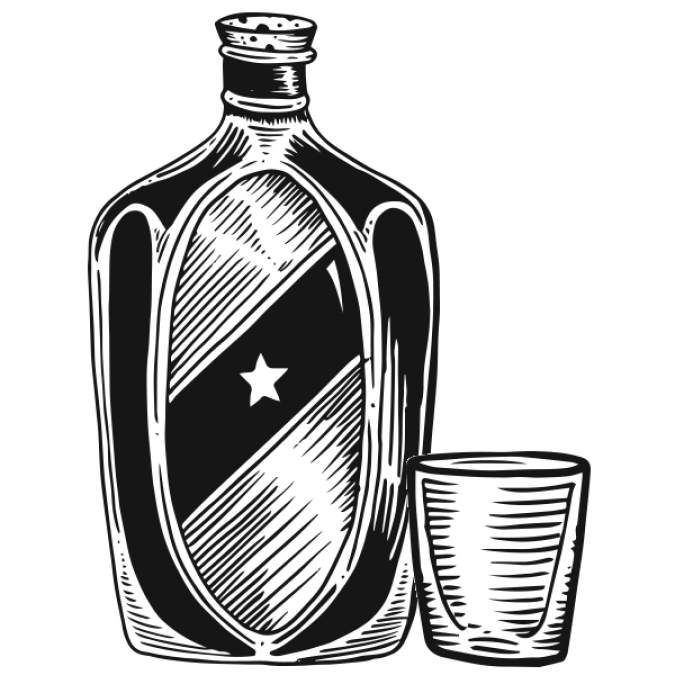Single-malt whiskey. For the dedicated whiskey drinker, it evokes the same reverence as a Bordeaux or Burgundy does for a wine lover. Long thought to be the sole domain of Scotland, distilleries throughout the world are challenging the notion that a great single-malt must come from one country, and Seattle’s Westland Distillery is the latest to take up the charge.
The moment I walked into their SoDo location, I had a good feeling. The slightly malty aroma that greeted me told me that I was in the right place, and the exposed wood, polished metals, and complicated custom-made equipment also showed that there’s plenty of money behind the project—which is good when you’re talking about a years-long build-up just to release the first bottle of whiskey.
Westland’s space itself is impressive: Prior to being a distillery, it was used to manufacture gantry cranes and other large metal objects. In a curious bit of local trivia, the roof of Safeco Field was built there. Today’s undertaking is no less ambitious: to produce a single-malt whiskey that can stand shoulder to shoulder with single-malts from Scotland and Japan and yet also be uniquely American.
Making a great single-malt whiskey is different than making almost any other spirit. In fact, in some ways it has more in common with winemaking than with bourbon-making. Because the goal is to allow the natural flavors of the malted barley to show through, the decisions made in every step of the process—the sourcing of the barley and the specific blend used; the way it’s malted; the yeast used in fermentation; the way it’s distilled and aged—show through in the finished product in a dramatic way.
That’s no easy task. To most people, American whiskey is synonymous with bourbon, which has a distinct flavor profile: rich and sweet. Even with the growth of the rye-whiskey industry, bourbon still dominates both production and sales. Single-malts, by comparison, are ephemeral, delicate, and expensive.
Master distiller Matt Hofmann is confident, though, that through a marriage of local ingredients, American ingenuity, and Scottish techniques, Westland can create a unique spirit that bridges the gap between classic American whiskey and scotch.
That starts by doing something almost unknown in Scotland: aging in new oak. Most scotch is aged in used oak barrels, which allow the spirit to mellow and develop without imparting all that much flavor. Westland instead is aging some of their single-malt in new American oak, with the goal of creating a scotch with a bit of bourbon in its genes.
The local influence in the spirit is in part mandated by a Washington law that requires that all liquors distilled in the state must use at least 51 percent local ingredients. That can create some challenges, according to Hofmann, since there’s just one producer of malt in the state. That said, it’s not only the government mandate that inspires them to use local produce. “We want to explore the terroir of Washington,” Hofmann says. “That’s why we’ve done so much experimenting with malts and yeasts, to be able to express that.”
That said, the Washington influence goes beyond the starting ingredients. Filled barrels of whiskey are warehoused in Hoquiam, Hofmann’s childhood home. The climate there is well-suited to aging single-malt: wet, cool, and foggy, just like Scotland.
It’s all well and good to replicate the processes used in Scotland and to invest a lot of money, but the proof is in the glass. The owners and I sat down to taste their first bottling with an interesting mix of hope and fear in the air. They’re obviously very proud of what they’ve created, but they also know that trying to produce a new spirit is a challenge.
I’ll admit I’m not a scotch expert. An enthusiastic amateur, maybe. So this is going to be a somewhat unverified claim: No scotch on the market is exactly comparable to Westland’s single-malt. It has the bright acidity and light floral notes that often epitomize lighter scotches, but the aging in new American oak gives it a rich, velvety texture and a smoother finish than most of them. Essentially, it stakes its own claim in the wide world of whiskey, and is well worth a try if you’re a scotch fan or just feel like experimenting. The distillery is open to the public 11 a.m.–6 p.m. Tues.–Sat., and is well-equipped to handle tastings.
thebarcode@seattleweekly.com







